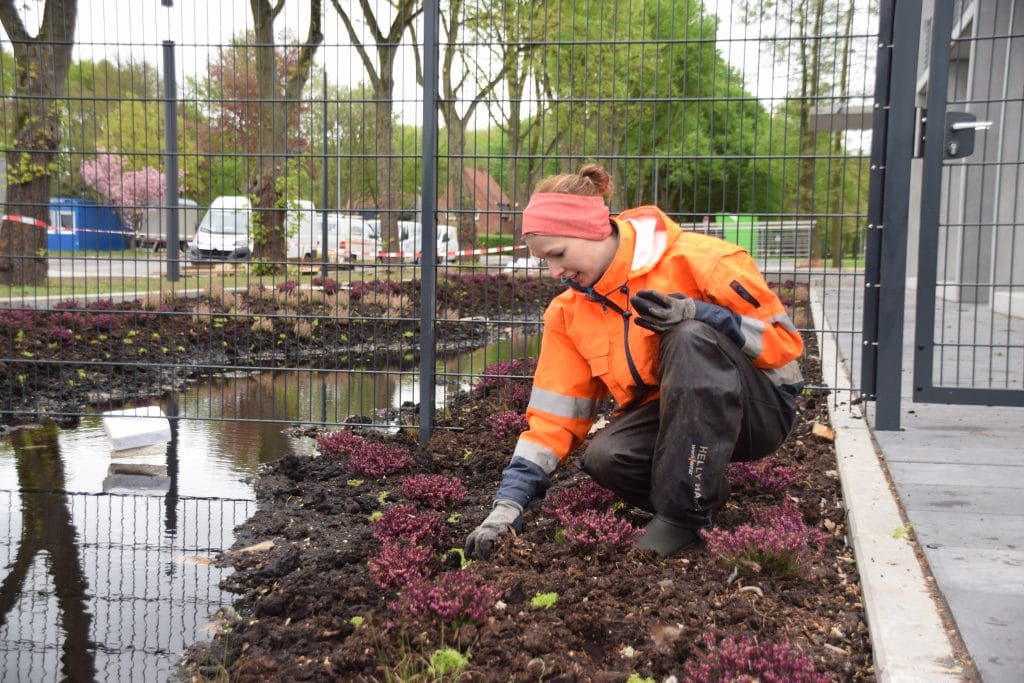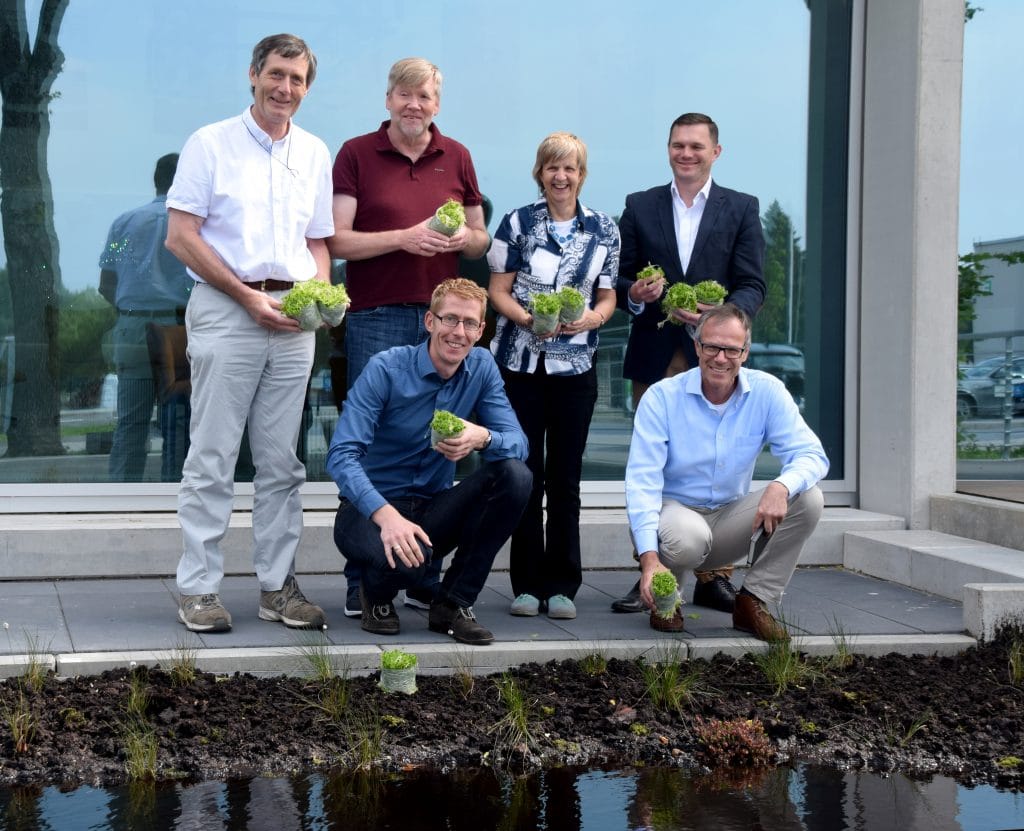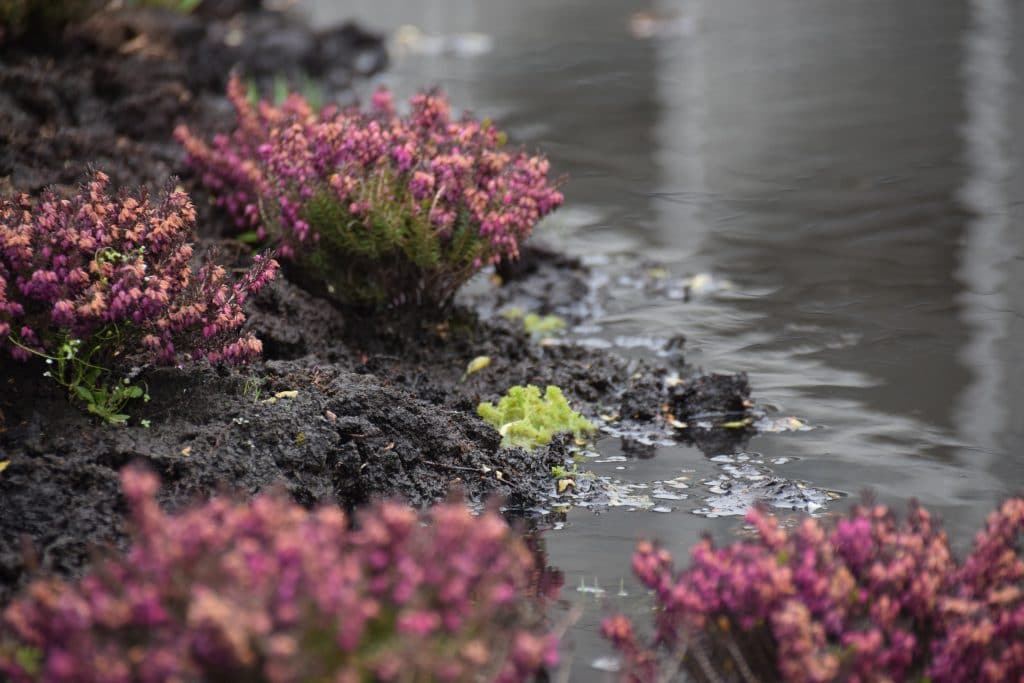Peat mosses at the Innovation Center
Fascinating plants

A tank was installed to collect the rainwater needed for raised peat bogs. It is no coincidence that these bogs are also referred to as “rainwater bogs”. A selectively actuated pump adds water to the peat basin or removes it through an overflow to keep the water at a constant level, ensuring optimum moisture supply to the mosses.

Inspected the planting on the spot and talked about future cooperation: (from left, back) Neal Wright (Micropropagation Services), Gerald Schmilewski (Land Use + Sustainability Management), Barbara Wright (Micropropagation Services), Mathew Barney (Micropropagation Services), (front) Jan Köbbing and Bert von Seggern (Director Land Use + Sustainability Management).
The indigenous plants were raised in greenhouses by the Micropropagation Services company in Leicestershire, England. Only a small part of the moss plant is needed for propagation in a nutrient solution under laboratory conditions and then left to grow into a large plant in the greenhouse. This method has two advantages:
Peat mosses are protected species and the removal of large quantities from bogs may only be performed in compliance with strict regulations. When the mosses are propagated in the laboratory, this step is practically eliminated.
Moreover, the mosses raised in a greenhouse do not contain any other unwanted flora or fauna, so that no other organisms are imported inadvertently.

What’s more, they can grow without restriction: the plant grows upwards while the base under water dies off owing to lack of air. This is how peat is created. In raised bogs, this peat grows in height by roughly one millimetre per annum.
Because of this peat formation, peat mosses play a key role in capturing CO2 in raised bogs. Bogs store twice as much carbon as the world’s entire forests.